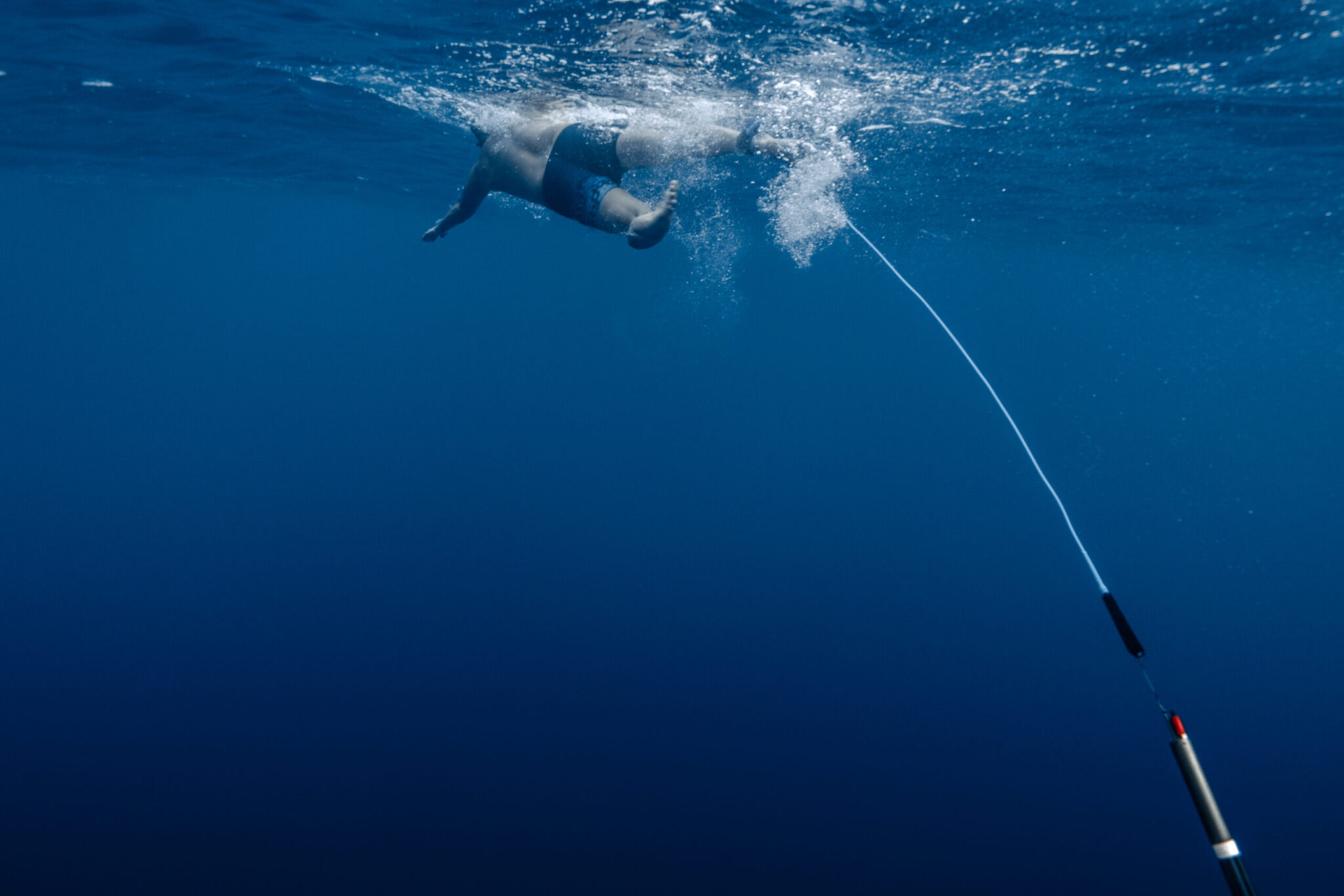EPIC SWIM MAUI – BREATH OF AWARENESS
SWIM AROUND THE HEART OF THE OCEAN
Hawaii sees itself as the heart of the Pacific, the largest ocean on earth. The indigenous people have strong cultural ties to the sea, and Hawaii also has a special place in the modern water world. Surfing became popular here with images that went around the world.
Thanks to the strong winds on the Hawaiian Islands, windsurfing was invented here. Today, people are pulled across the water on a board by a kite – kitesurfing. More recently, the surfer no longer has any contact with the water at all: you fly over the water on a foil and hold the sail in your hand without a mast. This is called “winging”.
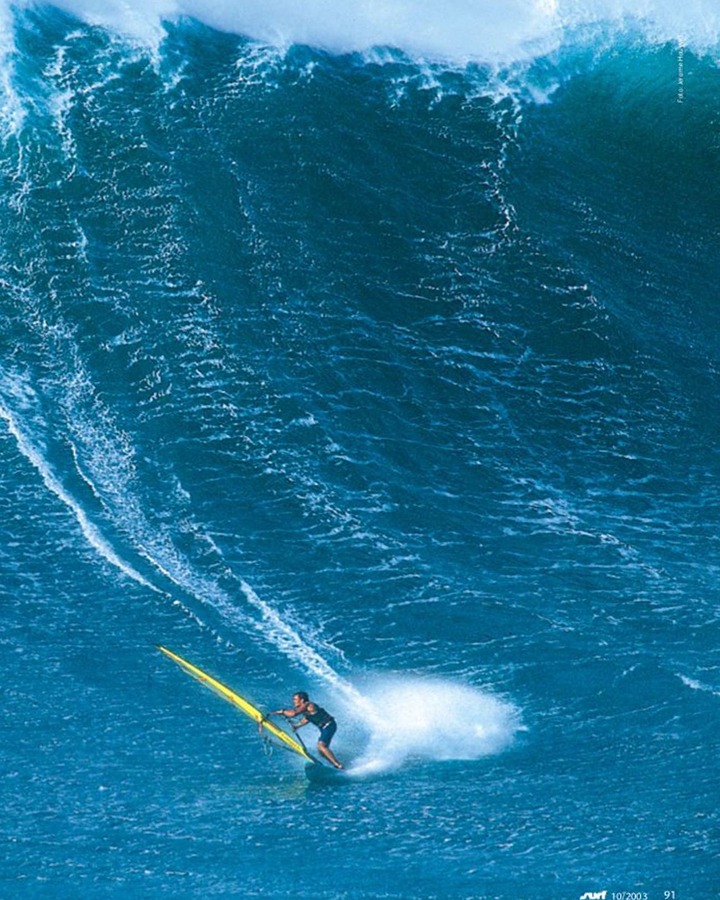
LOTS OF MESSING AROUND, SMALL REAL RELATIONSHIP WITH THE SEA
Behind the pictures showing the surfer in a big wave, a number of jet skis, countless support boats and drones are waiting in the air, photographers crowded together. There are agreements as to who is allowed to ride which wave and when. Waves are “stolen” by surfers who push their way in, who want the perfect picture, because there is a lot of money and recognition at stake.
More and more equipment, higher and higher waves, more and more circus, but it no longer has much to do with the image of the “Waterman”, the relationship with the ocean, the magic of days gone by.
Robby Seeger (52), former world windsurfing champion and single father on Maui for over 35 years, has had enough. He observes the development with concern. People have become too far removed from the sea, from nature. He doesn’t like it himself either. And he is not alone in this. Windsurfing legends such as Robby Naish, who also lives in Hawaii, confirm: “Most of us can’t even swim properly”. Yet swimming is the purest, most honest way for a person to get close to the ocean. Simply swim. Only in swimming trunks.
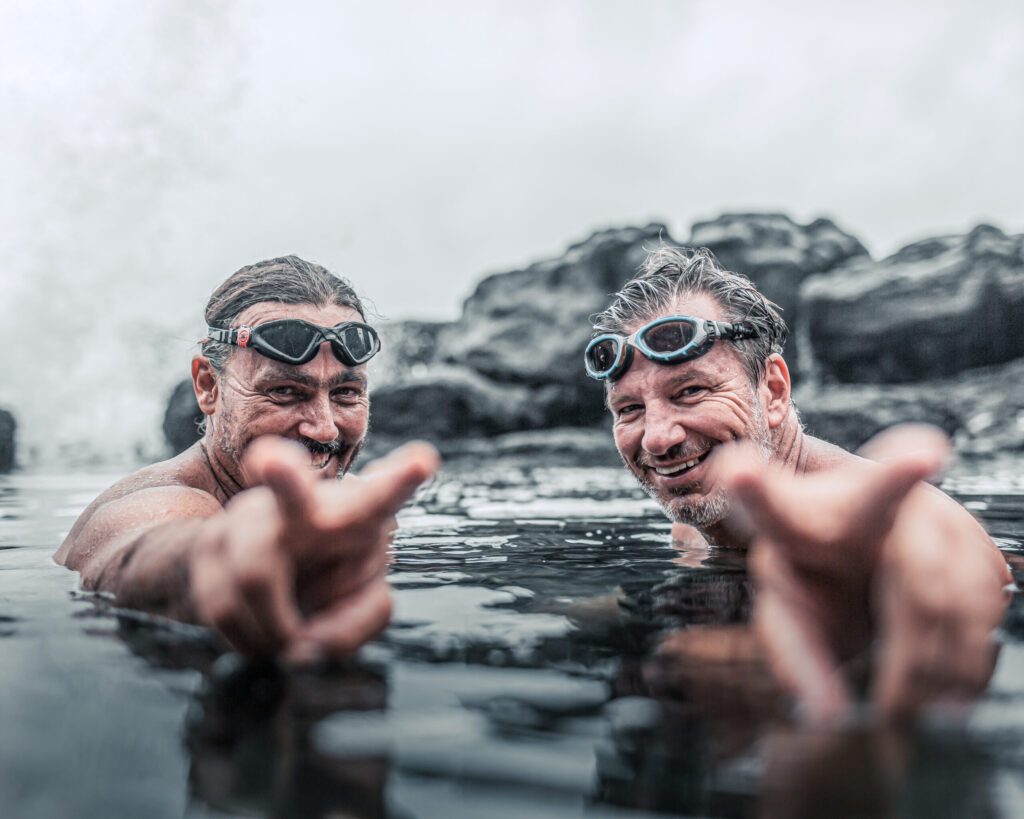
AROUND THE ISLAND - A DEMONSTRATION FOR THE OCEAN
Seeger, who also campaigns for environmental protection on the Hawaiian Islands, develops the idea of swimming around his adopted home of Maui. It should be an action with an external impact, something that makes people stop. A demonstration for the ocean.
Hawaii has always been a pioneer in environmental protection. In 2015, plastic bags were banned here in the state of Hawaii – a first in the USA, a sign that many countries have followed. Now the Pacific state is taking a further step. Sun creams that contain additives such as zinc, which has been proven to damage corals, will be systematically removed from sale and their distribution and use will also be banned in Hawaii. With around 15 million visitors a year, this is no small matter. The University of Hawaii has invested a lot of energy and research into this and is supporting the development of new mineral-based ingredients with its work.

CURRENT, CLIFFS, SHARKS - A STRETCH OF EXTREMES
Seeger alone does not dare to swim around Maui. Nobody normally goes into the water here: too dangerous, too strong currents, extreme winds, rough coastline with rugged lava rocks, some of which protrude hundreds of meters vertically into the sea. Large sharks have their territories here and patrol the coasts.
“There are sections here where no human has ever been in the water,” says Rodney Kilborn, a representative of Hawaiian culture who is deeply rooted in the island. It takes someone with this very special connection to the ocean. Apart from the sporting challenge, it is a spiritual journey and it takes someone with a special gift to even tackle something like this, let alone master such a pioneering project. From Hawaii, you set off on a search and end up directly and without detours with me, André Wiersig from Paderborn. Isn’t that crazy?
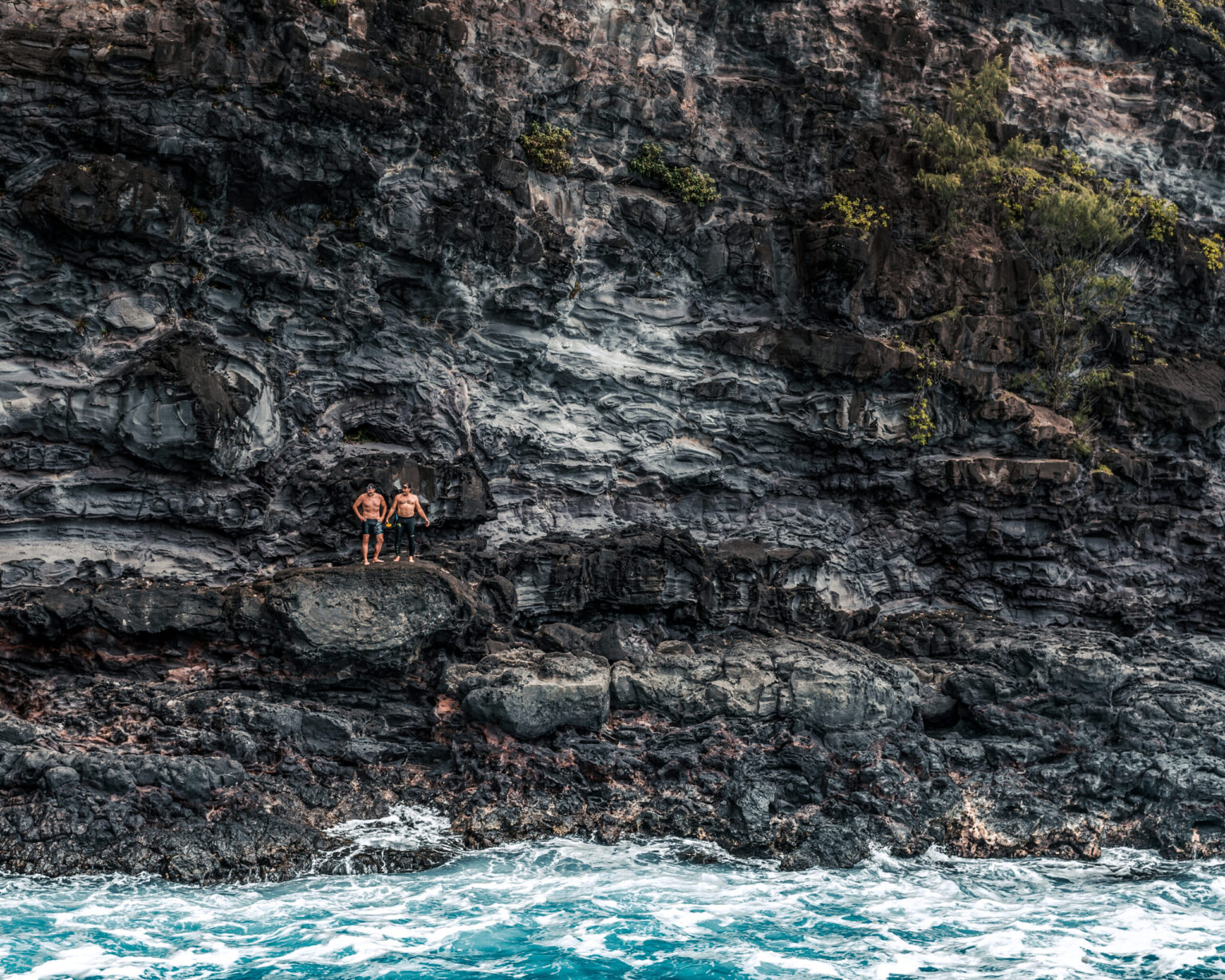
"MAN OF THE OCEAN" IN ACTION FOR MAUI
I was surprised when the call came from Hawaii. A feeling of deep respect and gratitude. To hear that I was the one closest to the Pacific touched me deeply; but that’s the way it is.
There is a lot of work ahead of us, because a project like this requires intensive preparation. It’s good that I can rely on my tried-and-tested team of current experts, navigators and sailors. Collecting and evaluating data, forecasting wind and sea weather and, of course, training for this enormous load over many days are now on the agenda for the coming months.
As an ambassador for the oceans, I report on my experiences as a person in the open sea in direct contact with littering, overfishing and global warming. As a keynote speaker for companies and organizations, I appeal to people without accusing them. To make a lasting change, you first have to understand the current situation and then introduce the right solutions. We need to understand and grasp what we have done and are unfortunately still doing to the oceans. The ocean suffers silently and invisibly. The sunrise looks just as beautiful the morning after as it did the day before, no matter how much pollution or waste humans have discharged, no matter how many species have been wiped out through blind greed.
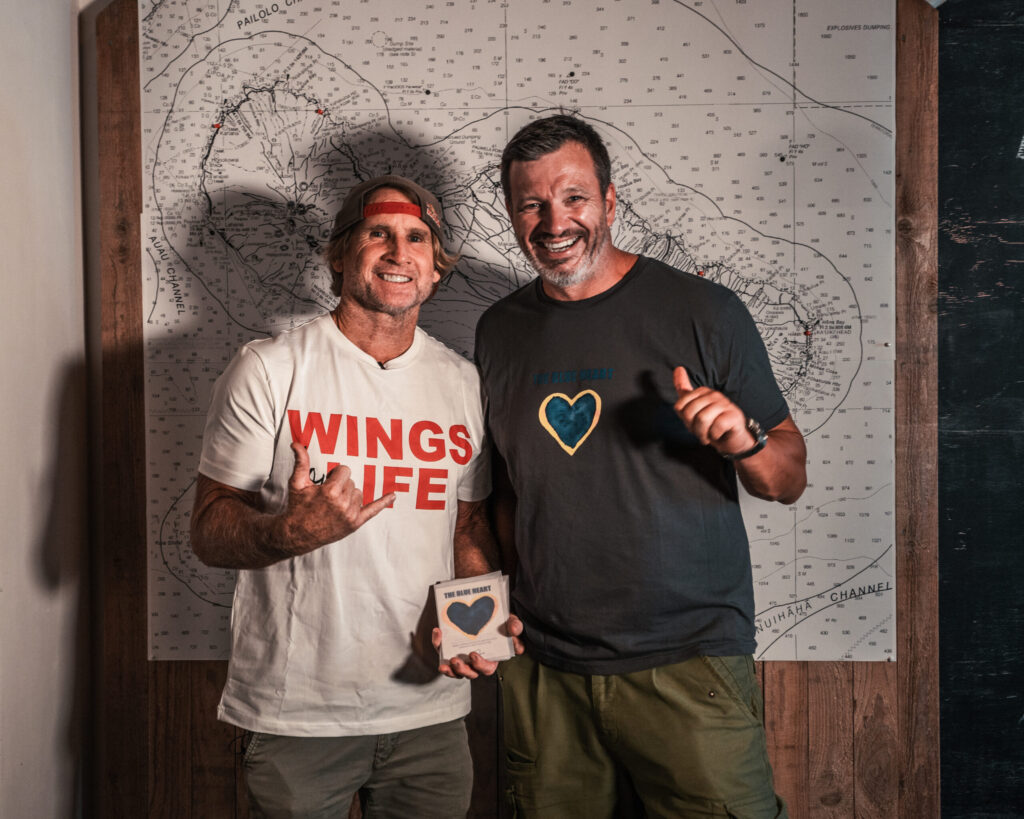
SWIMMING, ALSO FOR SCIENCE
Research vessels are equipped with measuring probes to record these changes, but these missions are expensive and time-consuming. In addition, the large ships do not reach the immediate coastal region, between reefs where rivers flow into the sea.
My idea of collecting scientific data during my expeditions and making it available to universities and marine institutes will be realized with the next project. More about that soon.
The “Epic Swim Maui – Breath of Awareness” project is due to start in July 2023.
